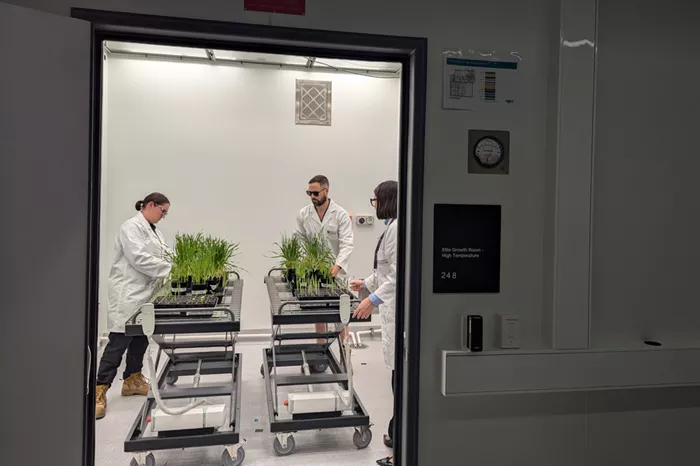A state-of-the-art facility designed to replicate environments ranging from rainforests to deserts will aid Australian plant scientists in enhancing crop productivity and securing future food supplies. The University of Queensland (UQ) has unveiled the $65 million Plant Futures Facility, equipped with advanced technology to precisely control factors like temperature, light intensity, light quality, humidity, and CO2 concentration. This control enables researchers to better understand how plants will respond to changing climates.
UQ Vice-Chancellor Professor Deborah Terry AC emphasized the facility’s uniqueness in scale and precision within the southern hemisphere. “This facility is an important national asset and solidifies Australia, Queensland, and UQ’s position as leaders in plant science research,” Professor Terry stated. She added, “Accurate control over growing conditions creates opportunities for precision plant science and accelerates experimental processes.”
Adam Fennessy PSM, Secretary of the Department of Agriculture, Fisheries and Forestry (DAFF), highlighted the importance of collaboration with industry and university partners. He stated that innovative research facilities like this are essential for maintaining Australia’s international leadership in agriculture. “To adapt to climate change, we must invest in research and development,” Mr. Fennessy said. “Sustainability in food systems is increasingly demanded by governments, investors, and consumers worldwide.”
Mr. Fennessy emphasized the need for teamwork among industries, governments, and research institutions to promote productivity growth, enhance access to international markets, and protect the health of animals and plants. “Facilities like UQ’s Plant Futures Facility are crucial for conducting onshore research that delivers positive outcomes for Australian agriculture.”
Construction of the six-story Plant Futures Facility began at UQ’s St Lucia campus in late 2021. The first seeds are expected to be introduced to the facility this month after an extensive commissioning phase. As plants develop within the facility, cameras and sensors will collect images and data for analysis.
The facility includes nine rooftop glasshouses—four for temperate plants and five for tropical plants—restoring some of the capacity lost in the 2022 Brisbane River flood. In addition to the three floors of grow rooms, glasshouses, and laboratories, the facility features two levels dedicated to mechanical and computer equipment.
Advancing Plant Science
Professor Christine Beveridge, Director of the UQ-led ARC Centre for Plant Success in Nature and Agriculture, noted that the facility will enhance understanding of the relationship between a plant’s genome and its environment. “We are still uncovering fundamental aspects of how plants function—what influences their flowering, branching, and leaf size,” Professor Beveridge said.
She explained, “We can now expose the same genetic material to varying temperatures or lighting that simulates different day lengths while keeping other environmental factors constant. This level of control was not achievable before the establishment of this specialized building and its advanced technology.”
Professor Beveridge stressed that increasing food production per unit of land is essential to meet the needs of a projected global population of 9.5 billion by 2050. She believes Queensland is well-positioned to support this goal. “This unique building will enhance our understanding of plant biology and expedite the development of crops suited to specific environments. It will also assist farmers in making informed decisions based on weather forecasts.”
The new Plant Futures Facility strengthens UQ’s involvement in the Australian Plant Phenomics Network, furthering the university’s commitment to advancing agricultural science.
Related topics:
- Rescued by Plant Heritage: Two Former At-Risk Plants
- Asters: The Perfect Way to Add Color to Your Autumn Garden
- Recovering Wetlands with the Right Plants is Great News for Our Planet


